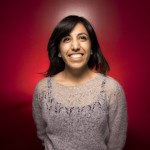
by Ishani Nath
The streets were lined with orange barricades, celebrity sightings were viral and plentiful, and lines of ticket holders hugged the sides of the movie theater, waiting eagerly for the doors to open and the show to begin. This was the Toronto International Film Festival and on Friday, September 18, it was the site of the world premiere of director Pan Nalin’s latest film, “Angry Indian Goddesses.”
I lined up with two of my girlfriends, chatting about the events of our week and our expectations for the movie as we waited excitedly for the 9:00 p.m. show.
I watched the trailerFf but didn’t really know what to expect since it left the story line vague. The two-minute preview, set to the tune of a hip Bollywood fusion song (that later played on repeat in my head), showcased the film’s plot: girls, women, buddies, mothers, sisters, lovers, enemies, bitches, victims, angels, killers, and goddesses.
The final message told viewers that this is a “buddy movie about seven women who are on the edge and are very, very angry.”
Since the movie had been dubbed by many as “India’s first female buddy comedy,” I figured I was in for the lady version of “Zindagi Na Milegi Dobara” or a Bollywood’s take on “Bridesmaids.” But what I saw went way beyond giggles and girl talk.
“I watched the trailer and was taken aback by certain words that appeared like ‘killer’ but I thought that must be satirical or would be related in a funny way,” Amanda De Souza, my friend who attended the premiere with me, said. “But it definitely was much more than the ‘buddy comedy’ it promoted itself to be.”
“Angry Indian Goddesses” is the story of a photographer (Sarah Jane Dias) who summons the important women in her life to Goa to announce that she is getting married. Over the course of the next few days, these women—including the bride’s former boss, old friends, new friends, cousin and longtime housekeeper—walk the beaches of Goa and in the processes share their triumphs, hopes, struggles, and more than a few drinks.
As an Indo-Canadian, who has only visited India for vacations, this film gave me a window into the world of my sisters. It artfully makes the audience fall in love quickly with each woman. Whether it’s the innocent half-Indian half-British Joanna (Amrit Maghera) or the ruthless businesswoman Suranjana (Sandhya Mridul), and it wasn’t long before I felt like the eighth member of this band of goddesses.
I laughed with them as they joked about taboo sex topics, cheered when they fought against unwelcome catcalls, and found myself deeply invested in each woman’s wellbeing—and crushed by the weight of what being a woman meant for them.
In 104 minutes, “Angry Indian Goddesses” touched on issues of arranged marriage, mental illness, grief, revenge, feminism, sexism, rape, motherhood, and so much more.
Despite how much is packed into a single movie, it wasn’t the number of topics or characters that was overwhelming, it was how much I could relate to and understand these struggles.
When the credits rolled, I felt like a different person. It was as if I had just lived seven different lives and then been delivered back to my seat with a renewed realization that women have a lot to be angry about.
“I can think of very few movies that have left me with an anxious, heavy, and awestruck feeling as this one did,” De Souza said. “For days later and still today, I think about it.”
To my surprise, the Q&A session that followed with the seven leading actresses and director Nalin did not reflect the strong message of female empowerment that I took from the film.

Nalin joked about how miraculous it was that seven women were able to work together for so long. But I didn’t laugh along. It’s 2015 and women can work together without causing an uproar.
In fact, (shameless plug) Brown Girl Magazine operates with a female-only team of more than 50 writers across the country and many of them have worked together for years now.
And, in an answer to another question about the message of the film, he said, “Angry Indian Goddesses” was first and foremost meant to be entertaining, and any message that audiences interpreted from the film were simply an added benefit.
“It seemed entirely opposite to the strong apparent messaging of female equality and empowerment in the film,” De Souza said, when reflecting on the Q&A period.
“The director downplayed the message that the movie was obviously sending,” Tara MacInnis, another friend who attended the screening, said.
The film was later recognized as the first-runner up for TIFF’s coveted Grolsch People’s Choice award.
Walking out of the theater, I felt like there were so many things I wanted to talk about, but I was at a loss for words.
[Read Also: 13 Times Zoya Akhtar Nailed the Issue of Gender Inequality in ‘Dil Dhadakne Do’]
It’s a new-age film that tells real stories about real women with real problems — so why should it be considered only “entertaining” when I left the theater with a lot more than a few chuckles and an unfinished bag of popcorn. At a time where women are fighting to be equals, “Angry Indian Goddesses” should not be classified as only a “buddy comedy,” rather it should be coined a divine intervention.
 Ishani Nath is a freelance reporter living in Toronto, Canada. Her byline has appeared in The Globe and Mail, Reader’s Digest Canada, Slate, and many other publications. She considers herself a mattar paneer connoisseur, a proud brown girl and an adult in training.
Ishani Nath is a freelance reporter living in Toronto, Canada. Her byline has appeared in The Globe and Mail, Reader’s Digest Canada, Slate, and many other publications. She considers herself a mattar paneer connoisseur, a proud brown girl and an adult in training.




